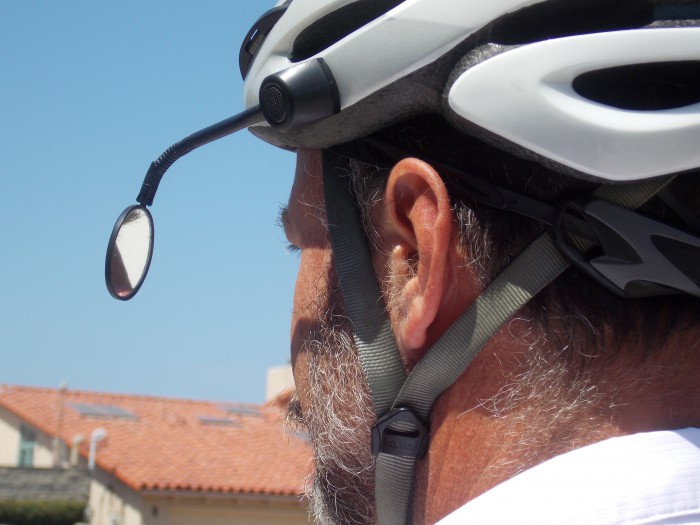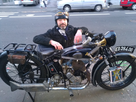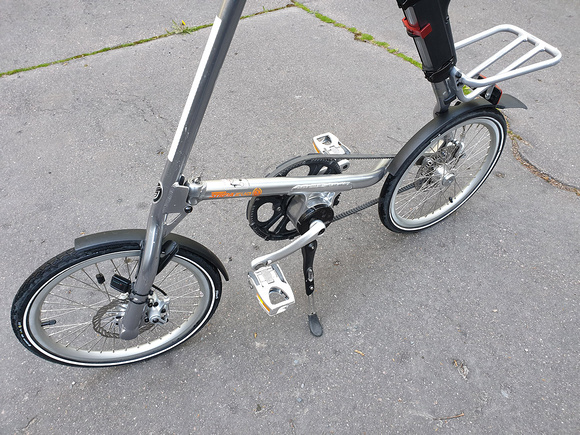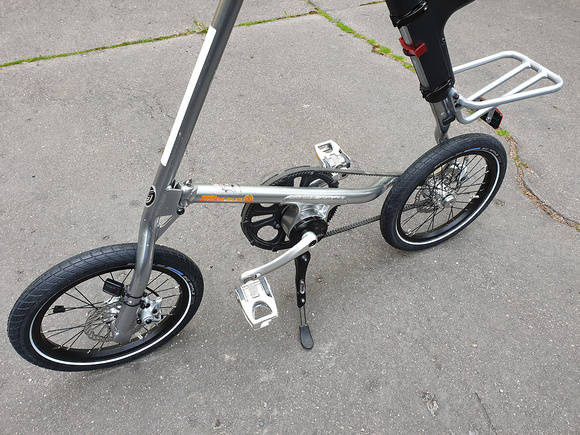Hello all !
One more new Strida owner reporting… sorry for my somewhat ‘gallic’ turns of phrase, I’m writing from Lille, France, and my English probably needs brushing up !
Here’s the context – I recently moved offices and my new work place is much closer to the metro station now, so I decided it was time for me to quit driving the old diesel Scenic to work. Good for the planet, and for my health too… not only because at 47, I can do with a bit of exercise, but also and mostly because I’m fed up with the daily routine of driving to work, through the traffic jams, with the radio pouring its dreadful news into my ears. So, I got that recent LT (16” wheels and just one speed) a week ago for a ridiculous amount of money, an opportunity I just couldn’t miss – tanks again to Patrick if he’s present on this forum too !
I must confess that I wasn’t much of a bicycle rider so far. One positive consequence is that, having no preconceptions about how a bike should handle, I was sure I would easily adapt to pretty much anything. However, the first meters on the Strida were surprising… fightening even, but forewarned is forearmed - that’s the experience most new Strida owners describe, so I just kept going bravely and it wasn’t long, maybe 1 km, before I felt perfectly comfortable with it. It’s been a week now and I can say it’s become a real pleasure to commute this way. There’s not much riding needed, just 5 minutes from home to the metro station, then 10 minutes in the metro, then again 10 minutes riding. I chose the Strida mostly because it’s very quick to fold and unfold, even more so now that I start folding/unfolding the handlebars and pedals while I’m still on the escalator !
So what’s to like, for my very specific use? Folding/unfolding time, definitely. And also its vertical shape when folded – so convenient when trying to get into the metro at peak hours. Most of the time I have to keep standing, with the bike against me. It takes little ground space so it’s no nuisance for others, and the clean drive belt is a clear advantage too. Maybe I would be thinking differently if I were taking the train, seated all the way, with more room to leave the bike on the floor. Then maybe a Brompton style of folding would be preferable… but such is not the case.
On a more futile note, it does attract attention (especially in that flashy orange colour) and questions from other passengers, which make the trip less boring ![]()
On the road – in my case, less than 3km of totally flat bicycle lanes, it’s fine. Very agile, comfortable enough as long as you avoid cobblestones and potholes – but there are hardly any on my way. The brakes behave superbly, even if one may argue that they are oversized given the average speed on this bike. That is maybe my only regret, it’s a bit too slow. I would prefer a three-speed model now, but again, I had that one for nought – say, one tenth of a basic Brompton ![]() ) – so I have a budget for future improvement if needed. That improvement will surely include a side stand and a rear view mirror. These options are not really necessary on my way to work, but I realize that I haven’t used my car for a week, I just prefer to combine metro and Strida now, whatever I’m doing ! So they will just make the bike a bit more versatile. Oh, and I have to check if I can mute that awful bicycle bell that keeps making noise all the time. Maybe there’s a way to tighten the bell a bit ?
) – so I have a budget for future improvement if needed. That improvement will surely include a side stand and a rear view mirror. These options are not really necessary on my way to work, but I realize that I haven’t used my car for a week, I just prefer to combine metro and Strida now, whatever I’m doing ! So they will just make the bike a bit more versatile. Oh, and I have to check if I can mute that awful bicycle bell that keeps making noise all the time. Maybe there’s a way to tighten the bell a bit ?
I realize my report won’t bring any new information about a bike you all know better than I do, but OK, I just wanted to write some positive comments about the Strida – it’s really changed my approach to urban transportation !






